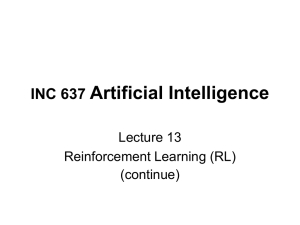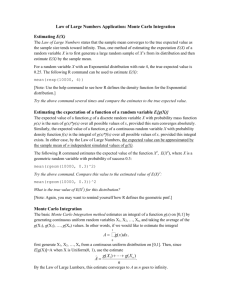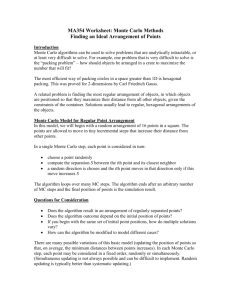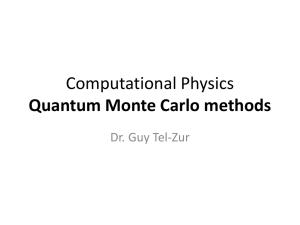Review 14
advertisement
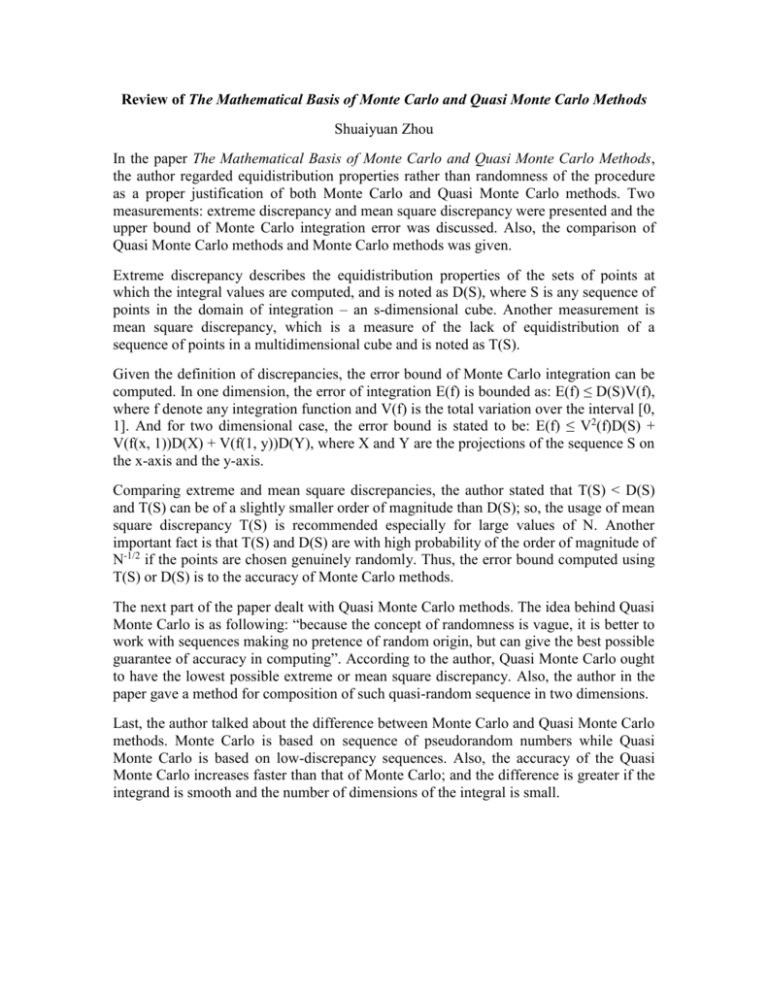
Review of The Mathematical Basis of Monte Carlo and Quasi Monte Carlo Methods Shuaiyuan Zhou In the paper The Mathematical Basis of Monte Carlo and Quasi Monte Carlo Methods, the author regarded equidistribution properties rather than randomness of the procedure as a proper justification of both Monte Carlo and Quasi Monte Carlo methods. Two measurements: extreme discrepancy and mean square discrepancy were presented and the upper bound of Monte Carlo integration error was discussed. Also, the comparison of Quasi Monte Carlo methods and Monte Carlo methods was given. Extreme discrepancy describes the equidistribution properties of the sets of points at which the integral values are computed, and is noted as D(S), where S is any sequence of points in the domain of integration – an s-dimensional cube. Another measurement is mean square discrepancy, which is a measure of the lack of equidistribution of a sequence of points in a multidimensional cube and is noted as T(S). Given the definition of discrepancies, the error bound of Monte Carlo integration can be computed. In one dimension, the error of integration E(f) is bounded as: E(f) ≤ D(S)V(f), where f denote any integration function and V(f) is the total variation over the interval [0, 1]. And for two dimensional case, the error bound is stated to be: E(f) ≤ V2(f)D(S) + V(f(x, 1))D(X) + V(f(1, y))D(Y), where X and Y are the projections of the sequence S on the x-axis and the y-axis. Comparing extreme and mean square discrepancies, the author stated that T(S) < D(S) and T(S) can be of a slightly smaller order of magnitude than D(S); so, the usage of mean square discrepancy T(S) is recommended especially for large values of N. Another important fact is that T(S) and D(S) are with high probability of the order of magnitude of N-1/2 if the points are chosen genuinely randomly. Thus, the error bound computed using T(S) or D(S) is to the accuracy of Monte Carlo methods. The next part of the paper dealt with Quasi Monte Carlo methods. The idea behind Quasi Monte Carlo is as following: “because the concept of randomness is vague, it is better to work with sequences making no pretence of random origin, but can give the best possible guarantee of accuracy in computing”. According to the author, Quasi Monte Carlo ought to have the lowest possible extreme or mean square discrepancy. Also, the author in the paper gave a method for composition of such quasi-random sequence in two dimensions. Last, the author talked about the difference between Monte Carlo and Quasi Monte Carlo methods. Monte Carlo is based on sequence of pseudorandom numbers while Quasi Monte Carlo is based on low-discrepancy sequences. Also, the accuracy of the Quasi Monte Carlo increases faster than that of Monte Carlo; and the difference is greater if the integrand is smooth and the number of dimensions of the integral is small.



